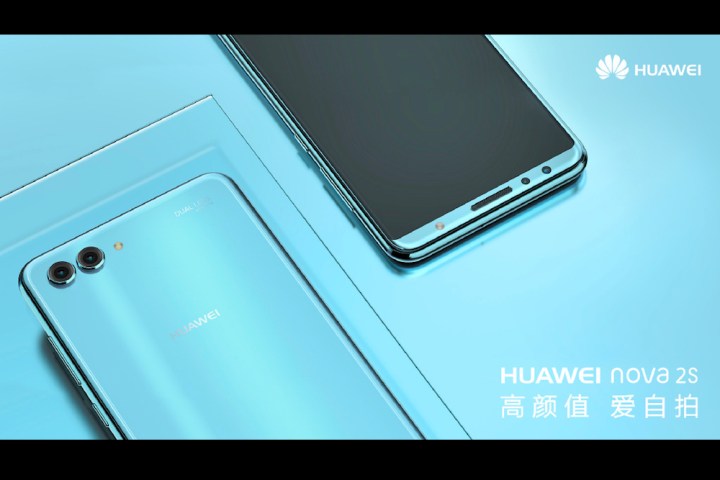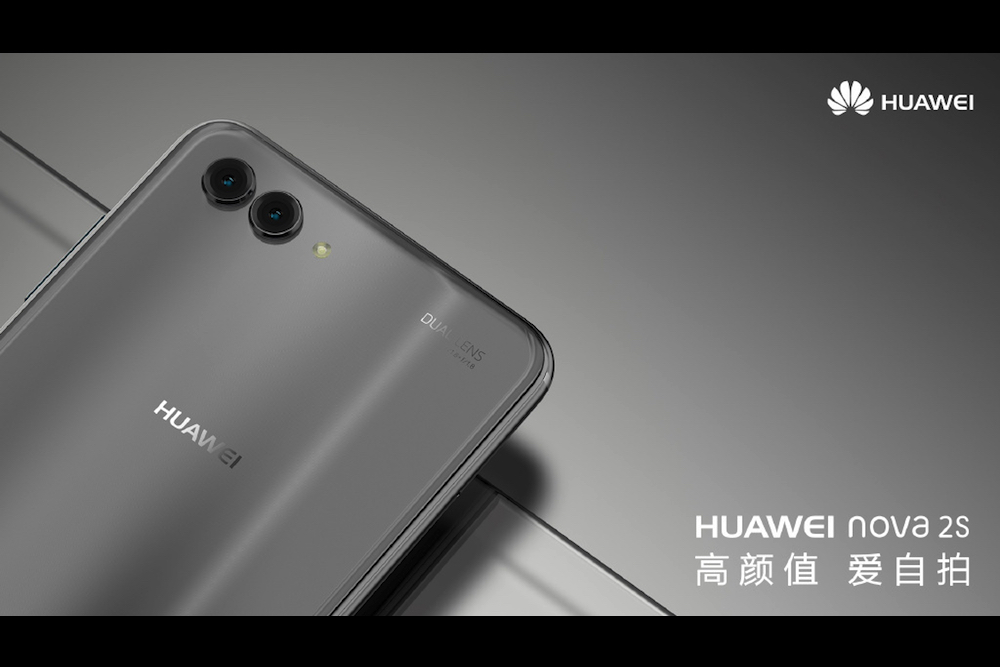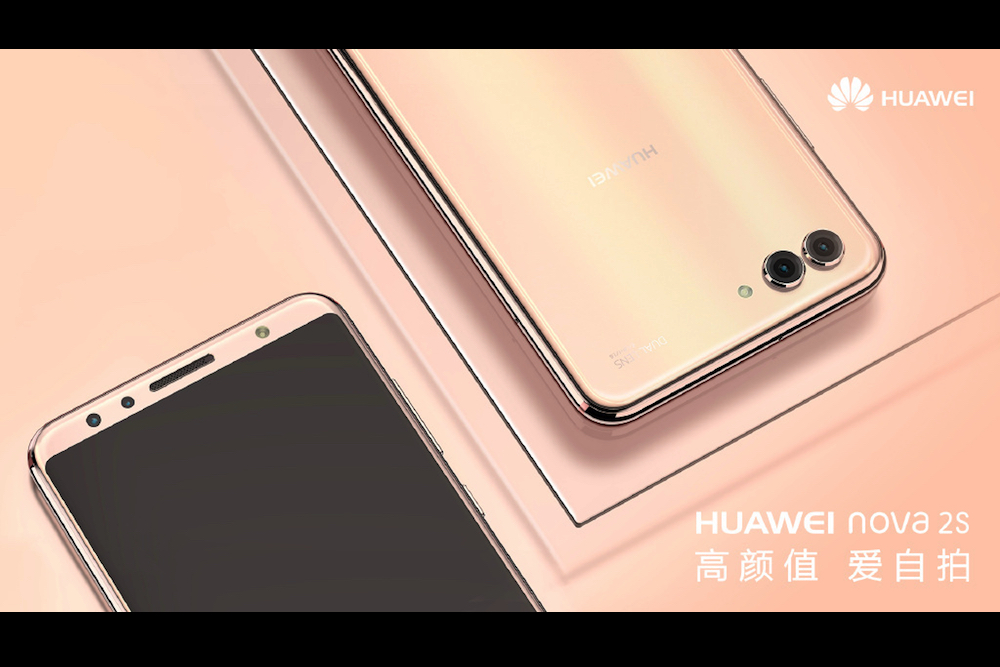
Here’s everything you need to know about the Huawei Nova 2S.
Specifications
The Huawei Nova 2S’s announcement comes at a very busy time for the group as a whole. It follows the Huawei Mate 10 Pro’s release, and comes just days after the Honor 7X and Honor View 10 launched in Europe and the United States. What makes the Nova 2S stand out? It has four camera lenses.
Huawei continues to tempt us with a strong camera. The Nova 2S has a dual-lens camera with a 20-megapixel and a 16-megapixel lens on the back — one shooting in RGB and the other in monochrome. Doubled up they take cool bokeh-style shots, and used on its own, the monochrome lens will take stunning black and white images.
It’s not just the rear camera that has two lenses: The selfie camera does too. A 2-megapixel secondary lens joins a 20-megapixel main lens, adding the same ability to adjust the focal subject in a photo that we’re used to with dual-lens rear cameras. In a promotional video, Huawei also shows how this can be used to change the background in a selfie. There’s also a selfie flash unit.
Like all the previously mentioned new phones, the Huawei Nova 2S is another with an 18:9 aspect ratio screen, shrinking the bezels around it for a big-screen, small body design. It’s a 6-inch screen on the front with a 2160 x 1080 pixel resolution, and like the View 10, a fingerprint sensor is underneath it, rather than on the back like the Huawei Mate 10 Pro. The body looks beautiful in the pictures, especially in the light blue color, and has a glass rear panel. It’s slim at 7.5mm and light at 169 grams.
This isn’t a flagship phone, so the Kirin 970 processor with all its cool artificial intelligence hasn’t been used in the Nova 2S. Instead it’s last year’s Kirin 960 with either 4GB or 6GB of RAM. A choice of 32GB, 64GB, or 128GB in a special edition version of the phone is offered, plus there is a MicroSD card slot. Other features include a 3,340mAh battery, a 3.5mm headphone jack, Android 8.0 Oreo with EMUI 8, and face unlock using the selfie camera.
The special edition Huawei Nova 2S is a collaboration between Huawei and Chinese singer Yixing Zhang a.k.a Lay. The design appears to be the same as the other models, but may only be available in a single obsidian black color. Expect custom wallpapers, icons, and other visual features. Huawei has worked with Yixing Zhang before, including on the Nova 2.
Release and price
The Huawei Nova 2S was made official on December 7 at an event in China, with pre-orders open through the Vmall online store between December 8 and December 11. There are three different configurations of the phone, all at different prices. The cheapest has 4GB of RAM and 64GB of storage space for 2,700/$410 yuan, while a 6GB/64GB version is 3,000 yuan/$453. The most expensive Nova 2S is 3,400 yuan/$510 and has 6GB of
There’s no news on an international release for the Nova 2S yet, but we’ll keep you updated if anything changes.
Update: Now the Huawei Nova 2S has launched, we’ve added in all the specifications and official images.
Editors' Recommendations
- You may have to wait a lot longer for the OnePlus Open 2
- 5 phones you should buy instead of the Samsung Galaxy S24 Plus
- Every Android tablet we’re expecting in 2024
- 5 phones you should buy instead of the Samsung Galaxy S24
- Everything you need to know about the massive Apple App Store outage





